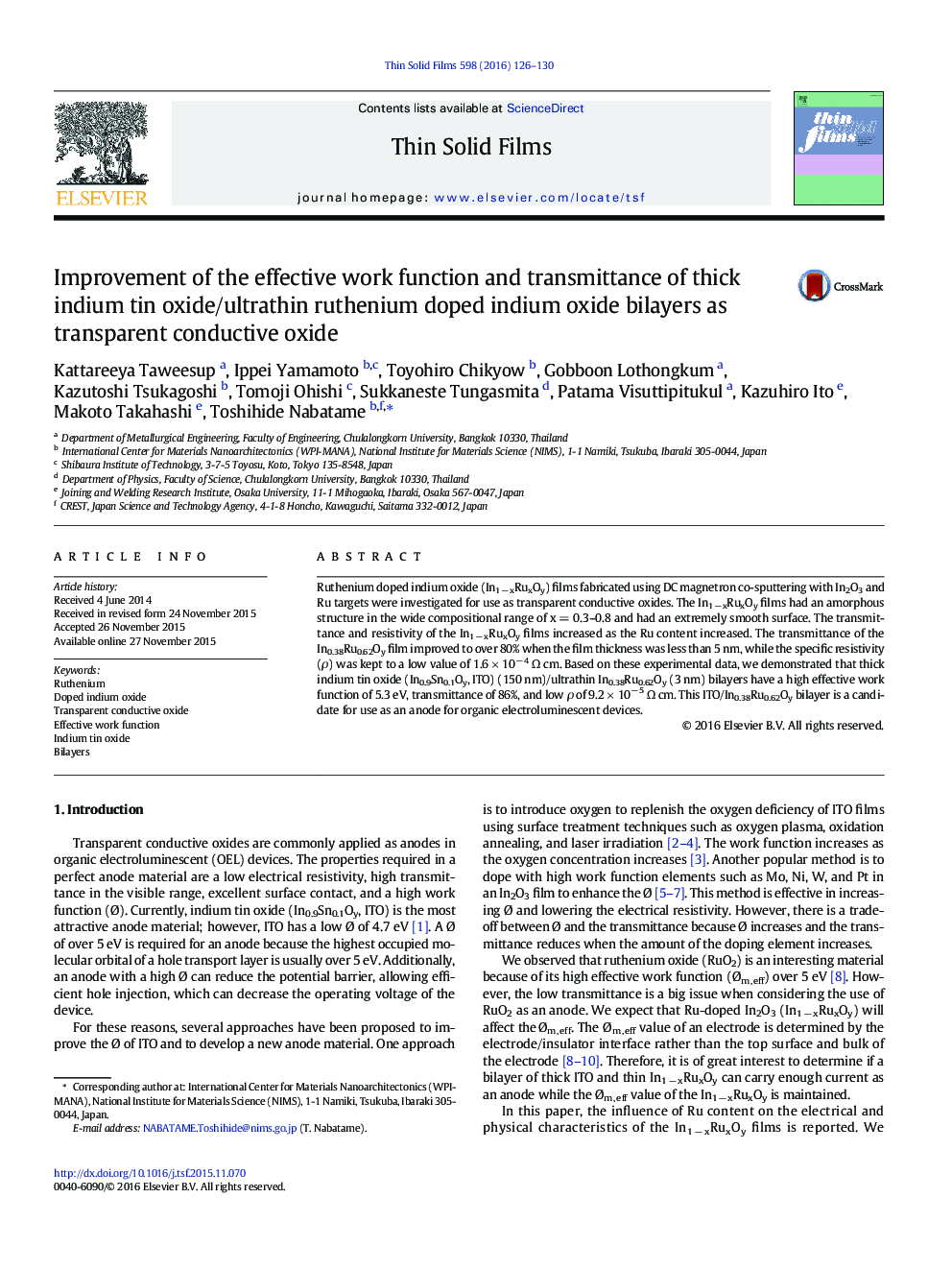| Article ID | Journal | Published Year | Pages | File Type |
|---|---|---|---|---|
| 1664437 | Thin Solid Films | 2016 | 5 Pages |
Abstract
Ruthenium doped indium oxide (In1 â xRuxOy) films fabricated using DC magnetron co-sputtering with In2O3 and Ru targets were investigated for use as transparent conductive oxides. The In1 â xRuxOy films had an amorphous structure in the wide compositional range of x = 0.3-0.8 and had an extremely smooth surface. The transmittance and resistivity of the In1 â xRuxOy films increased as the Ru content increased. The transmittance of the In0.38Ru0.62Oy film improved to over 80% when the film thickness was less than 5 nm, while the specific resistivity (Ï) was kept to a low value of 1.6 Ã 10â 4 Ω cm. Based on these experimental data, we demonstrated that thick indium tin oxide (In0.9Sn0.1Oy, ITO) (150 nm)/ultrathin In0.38Ru0.62Oy (3 nm) bilayers have a high effective work function of 5.3 eV, transmittance of 86%, and low Ï of 9.2 Ã 10â 5 Ω cm. This ITO/In0.38Ru0.62Oy bilayer is a candidate for use as an anode for organic electroluminescent devices.
Related Topics
Physical Sciences and Engineering
Materials Science
Nanotechnology
Authors
Kattareeya Taweesup, Ippei Yamamoto, Toyohiro Chikyow, Gobboon Lothongkum, Kazutoshi Tsukagoshi, Tomoji Ohishi, Sukkaneste Tungasmita, Patama Visuttipitukul, Kazuhiro Ito, Makoto Takahashi, Toshihide Nabatame,
